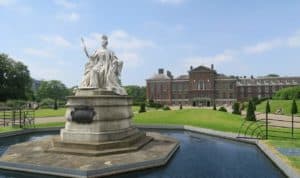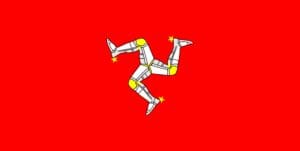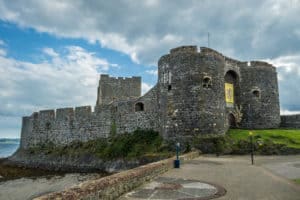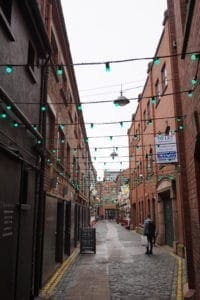Tír na nÓg The Mythical Land of Youth: Unveiling the Secrets and History
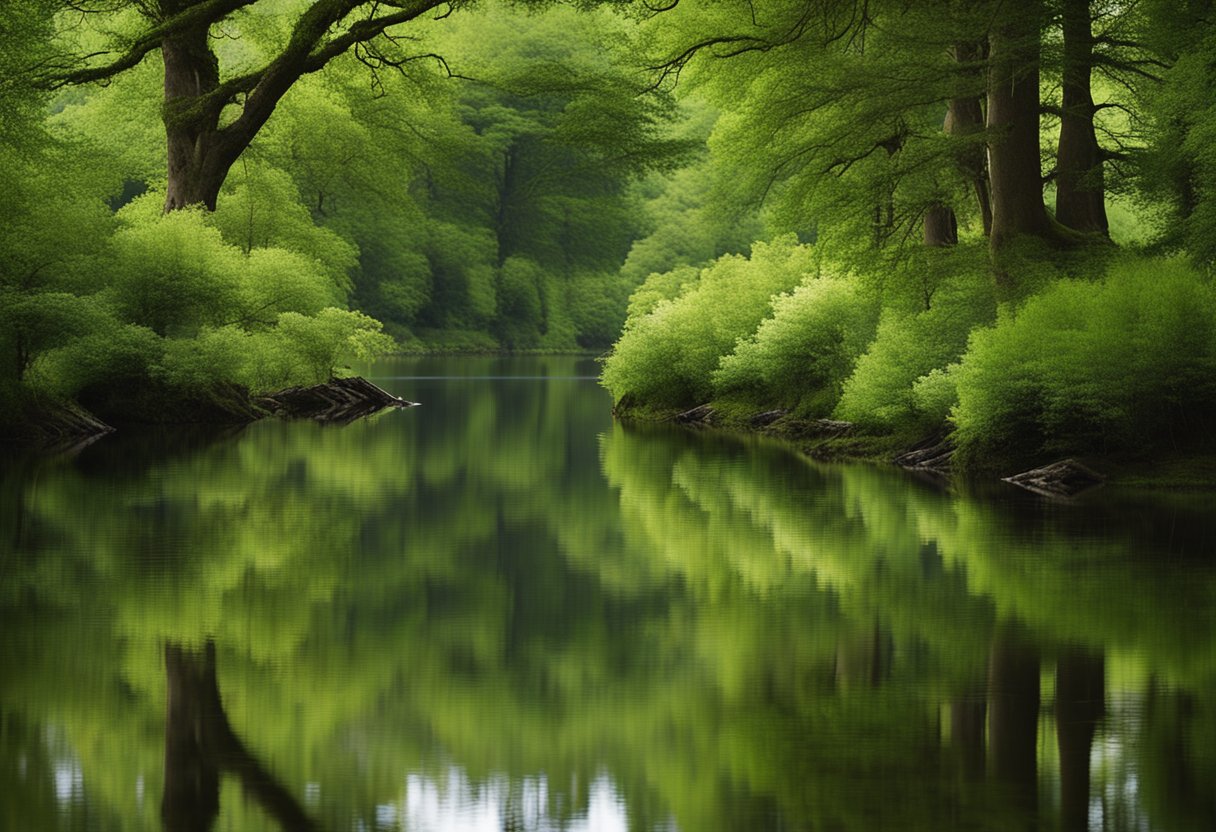
Updated On: March 16, 2024 by Maha Yassin
In the tapestry of Irish mythology, Tír na nÓg holds a prominent place in the mythical realm known as the Land of Youth. This enchanting land is where eternal youth, beauty, health, and joy are abundant, and time moves differently, preserving the vigour of all who dwell there. Renowned tales like that of Oisín and Niamh, where a mortal hero is beckoned to this otherworldly domain, illuminate the depth and allure of Tír na nÓg within the wider corpus of Celtic lore.
This legendary place is not just a fixture of fantastical stories; it carries significant symbolic meaning, often representing an escape from the hardships of mortal life, a paradise lost, and a deep yearning for the idyllic. Literature has long celebrated Tír na nÓg, delving into its thematic richness and societal impact. The myth also underscores the cultural importance of the Fianna warriors, connecting epic narratives to the land’s geography and supernatural elements. The fascination with Tír na nÓg continues today, influencing modern interpretations and addressing timeless questions about life, death, and what might lie beyond.
Origins and Overview of the Mythical Land of Youth
In our exploration of Irish mythology, Tír na nÓg stands out as a quintessential emblem of the Celtic culture‘s embrace of the Otherworld. This mythical domain of eternal youth and beauty captures the essence of Irish lore.
Celtic and Irish Mythological Roots
Tír na nÓg’s origins are deeply rooted in the rich tapestry of Celtic mythology and Irish legend. Our oral traditions have preserved these narratives, which thrived well before they were ever recorded in texts, conveying the tales through generations. The Otherworld in these stories isn’t merely a backdrop; it’s a critical reflection of the society’s spirituality and worldview. Historically, Ireland’s legends often intertwine with mystical realms, offering a glimpse into the ancient Celtic understanding of existence beyond the physical plane.
The Otherworld in Irish Lore
In Irish mythology, the concept of the Otherworld is a complex one. This is vividly seen in tales of Tír na nÓg, described as a place detached from the mortal perception of time and space. Our legends describe it as an island paradise where sadness and death are absent and where beings of great power reside. According to the narratives, entry to this land could be gained through special invitations from its inhabitants or by venturing into mystical portals believed to connect our world to theirs. These stories, existing within a historical context, epitomise the Celtic fascination with an unseen world parallel to our own, yet markedly different.
The Narrative of Oisín and Niamh
The tale of Oisín and Niamh is a central thread in Irish mythology, weaving themes of eternal love and otherworldly adventure into the rich tapestry of Celtic storytelling.
The Tale of Love and Adventure
Oisín, a celebrated warrior and poet of the Fianna, falls deeply in love with Niamh, a beautiful maiden from the mystical land of Tír na nÓg. Their story is not merely one of romance but also embodies the interplay between the mortal realm and the enchanted world. It is a narrative that invites us to explore the boundaries of our existence and the nature of desire and fulfilment.
Oisín’s Journey to the Magical Land
Upon a magnificent magical white horse, Niamh arrives from Tír na nÓg to invite Oisín on an extraordinary journey. Captivated by her beauty and promise of a land where age and death hold no sway, Oisín leaves his life as a warrior behind. Their voyage across the sea symbolises the crossing from the known to the mysterious realms of immortality and everlasting youth.
Niamh and the White Horse
The white horse Niamh rides is an emblematic figure in the legend, representing the passage between worlds. Niamh’s arrival on this horse and her love for Oisín draws the warrior into a saga where time stands still and the concerns of the earthly world fade away. Together, they embark on a path that extols the potency of love and the allure of a land untouched by time’s relentless march.
Symbolic Significance in Tír na nÓg
Tír na nÓg holds profound symbolic meaning in Irish mythology, expressing themes of unattainable desires and the human longing for a state of ideal existence.
Eternal Youth and Immortality
In Irish mythology, Tír na nÓg is often synonymous with everlasting youth and immortality. The allure of this mythic land lies in its promise of never ageing and living without the spectre of death. This concept resonates with the universal human desire to escape the inevitable decline that time imparts upon us. The symbolism here represents a deep-seated human hope to retain vitality and freedom from the ailments that come with old age.
Paradise and the Afterlife
Tír na nÓg is also depicted as a paradise, a supernatural realm where happiness and abundance are eternally abundant. The crossover between the idyllic nature of Tír na nÓg and the concept of the afterlife reflects a cultural narrative on what lies beyond our mortal coil. Here, the land of youth is a metaphor for the soul’s journey after life, suggesting that what awaits is a place free from earthly suffering, where joy is perpetual, and its corporeal existence unburdens the soul.
Representations of Tír na nÓg in Literature
Our examination of Tír na nÓg reveals that its portrayal has evolved significantly across various literature while maintaining a common thread of mystical allure. Delving into its literary presence, we can see how Tír na nÓg captures the imagination and reflects the timeless human desire for a paradisiacal realm.
Evolving Depictions
The representation of Tír na nÓg in literature has been as transformative as the myth itself. Starting with ancient texts and evolving to modern narratives, the depiction of the Land of Youth is a testament to myth’s adaptability within cultural consciousness. Early references to Tír na nÓg are found in the annals of Irish folklore, which depict it as an unreachable paradise, home to deities and heroes of old. This concept is brilliantly encapsulated in Gods and Fighting Men, a compilation of tales by Lady Augusta Gregory that remains integral to Celtic literature. Here, Tír na nÓg represents a transcendent realm, promising eternal youth and joy beyond the confines of mortal realms.
The allure of Tír na nÓg persists in contemporary literature, often serving as a symbol of escape from the hard edges of reality. These modern retellings may not adhere to the traditional characteristics found in Gods and Fighting Men. Yet, they encapsulate what Tír na nÓg stands for—unbounded potential and the human yearning for what lies beyond our reach.
Comparative Mythology
Comparing Tír na nÓg to other mythological paradises reveals a shared cultural mind wherein every mythology carries its form of an idyllic otherworld. Within Celtic legends, the Land of Youth holds a unique place, often compared to the Elysian Fields of Greek mythology or the Valhalla of Norse lore. The interconnected nature of these myths indicates a collective fascination with the notion of an afterlife that rewards the brave and virtuous with peace and lasting happiness.
Irish folklore brims with tales of heroic quests that lead to Tír na nÓg, many of which involve arduous journeys and encounters with the supernatural. These narratives underscore the cultural significance of Tír na nÓg, illustrating how it sits within a broader context of comparative mythology. This context weaves through the world’s diverse literary tapestry, offering glimpses into the shared human experience.
The Societal Role of Tír na nÓg Myths
In exploring the fables of Tír na nÓg, we uncover the tapestry of Gaelic cultural identity and the timeless moral lessons conveyed through the myths of the land of youth. These stories capture the eternal human desire for transformation and an ageless existence, shaping our understanding of belief systems and societal values from ages past.
Cultural Identity and Beliefs
The myths of Tír na nÓg are indelibly woven into the fabric of Gaelic culture, serving as a cornerstone of our collective identity. They manifest the beliefs that define us, from our perception of the otherworldly to our deep-seated yearnings for beauty and vitality. Gaelic wisdom and reverence for the natural world come to life in depicting this otherworld, reminding us of a heritage rich in enchantment and connection to the ethereal realms.
Embedded within these tales are symbols of transformation; they reflect a society enchantingly tied to the land and the cycles of life and death. The inhabitants of Tír na nÓg, the Tuatha Dé Danann, signify a deep-rooted belief in forces that shape and guide our existence, mirroring our ancestors’ interpretations of life’s mysteries and the powers that govern them.
Teachings and Moral Lessons
Embodied within the fascinating lore of Tír na nÓg are essential moral lessons that transcend time. The stories impart a sense of nostalgia for an immutable, idealised state of being, cautioning us of the potential consequences of longing for what may lie beyond our mortal grasp. These narratives often highlight the virtues of contentment and warn of the dangers inherent in abandoning one’s duties and the allure of escapism.
Furthermore, they encourage us to reflect on the nature of happiness and the pursuit of fulfilment. The voyage to Tír na nÓg requires courage and often entails personal sacrifice – a theme that resonates across countless generations and reflects our quest for meaning and purpose.
Through our engagement with the myths of Tír na nÓg, we are perpetually reminded of the importance of our heritage and the time-honoured values that continue to shape our collective ethos to this day.
Tír na nÓg and the Fianna Warriors
Tír na nÓg holds a special place in the rich tapestry of Irish mythology, particularly in connection with the legendary Fianna warriors. The stories surrounding this mystical land and its association with Fionn Mac Cumhaill and his band of heroes symbolise courage and timeless youth.
Fionn mac Cumhaill’s Connection
Fionn mac Cumhaill, the celebrated leader of the Fianna, remains central to the lore of Tír na nÓg, the Land of Youth. In legends, Tír na nÓg was accessible to mortals only through invitation or enchantment, a privilege extended to few. Fionn’s encounter with this realm is intricately linked to his lineage, with his son Oisín’s journey to Tír na nÓg being among the most poignant tales. This narrative immortalises Fionn not only as a warrior but also as a figure transcending the boundaries of the mortal world.
The Role of the Fianna
The Fianna, Fionn’s band of noble warriors, were revered for their bravery and martial prowess. They stand out as heroes in Celtic myths, symbolising the virtues of strength, honour, and courage. Linked to Tír na nÓg through Oisín’s adventures, the Fianna’s existence straddles both the earthly and the ethereal. This connection underscores the enduring allure of the Fianna in Irish lore, as they embody the quest for eternal youth and the idea that brave deeds can lead one to a higher, everlasting plane of existence.
The Physical Realm of Tír na nÓg

In our exploration of Irish mythology, we spotlight the celebrated realm of Tír na nÓg. Recognised for its eternal vibrancy and abundance, this mythical location is deeply engrained in the fabric of Irish folklore.
Geographic and Natural Descriptions
Tír na nÓg’s geography, as it’s portrayed in legends, conjures images of a paradisiacal island where time ceases to hold sway. The very soil of this land exudes the magic and abundance that are hallmarks of a magical land. Tír na nÓg’s terrain is peppered with forests teeming with diverse, lush nature, far beyond the greenery of any known Irish landscape.
Particularly noteworthy are the apple orchards of Tír na nÓg, which symbolise eternal youth and happiness. These trees are thought to bear fruit that possesses life-sustaining qualities, and their presence adds a layer of enchantment to the already spellbinding panorama of this realm. The orchards embody nature’s inexhaustible generosity, which resonates with the Irish appreciation for the fertile earth and its sustenance.
We find the narratives of this land not only in myth but also echoed in the celebration of Irish culture, a testament to a people’s relationship with nature and the honouring of lands filled with potential and wonder.
Supernatural Elements of the Myth
The myth of Tír na nÓg brims with enchanting elements that draw us into its supernatural realm, where inhabitants never age, and mystical beings abound.
The Inhabitants of the Land
In the ethereal land of Tír na nÓg, we find an extraordinary community of deities and immortal beings. These residents are often linked to the Tuatha Dé Danann, a fabled race of gods and goddesses who once ruled Ireland. Their presence in Tír na nÓg symbolises an enduring connection to Irish culture and heritage, underscoring the significance of fairies and other supernatural entities in Celtic tradition.
Mystical Creatures and Deities
Beyond the immortal inhabitants, Tír na nÓg is said to be home to a host of mystical creatures and fae. These magical species span a diverse spectrum, from all-knowing deities with overarching powers to elusive fairies that represent the untamed spirit of nature. Serving as guardians of the realm and embodying various aspects of the world’s beauty and wisdom, these creatures and deities form the backbone of this realm’s supernatural essence.
Comparisons with Other Mythical Lands
In exploring the enchanting lands within Irish mythology, we can draw parallels with various legendary realms from Celtic and broader mythological tapestries. These mythical places often reflect an array of cultural values and spiritual beliefs.
Relations to Celtic and Other Mythologies
Annwn and Mag Mell bear resemblance to Tír na nÓg in terms of their representation within the Celtic mythos as lands of youth and eternal bliss. Annwn, often referred to in Welsh mythology, is akin to Tír na nÓg in its portrayal as an otherworldly paradise free from sickness and death.
Avalon, another legendary isle known from Arthurian legends, shares connections with Tír na nÓg through its mystical qualities and healing powers. Both lands are places of rejuvenation, where mortal limits are transcended, and eternal life is a central theme.
The Isle of Hy Brasil, much like Tír na nÓg, is steeped in the Irish folklore and mists of the Atlantic as an elusive destination. It is often presented as a paradise, mirroring the bountiful and joyful existence found in Tír na nÓg.
Our look at the Celtic Otherworld reveals a complex web of enchanted realms, including Tír na nÓg. This otherworld is a multifaceted concept encompassing various aspects, from adventure and wonder to danger and self-discovery.
‘Plain of Delight’ translates to the sheer beauty and happiness associated with Tír na nÓg and its counterparts. It is a common motif in otherworldly myths, symbolising the ultimate escape from life’s hardships.
Furthermore, the narratives surrounding Immram, which are Irish tales about sea voyages to the enchanted isles, often include encounters with realms like Tír na nÓg. These stories illustrate a quest for the divine or a profound transformation upon visiting these spectacular lands.
Our examination shows that these mythical lands share a foundation of hope and the pursuit of an idyllic existence beyond earthly confines across various cultural mythologies.
Modern Interpretations and Influence
In exploring Tír na nÓg’s enduring legacy, we uncover its vibrant reinterpretations in contemporary culture and the varied ways it continues to captivate modern audiences.
Tír na nÓg in Contemporary Culture
Tír na nÓg, the mythic Celtic land of youth, has permeated modern art, literature, and media. Writers and artists frequently draw upon this legend, fashioning it anew for current and future generations. For instance, in film and television, references to Tír na nÓg often symbolise an unattainable utopia or a lost paradise—a yearning for an ideal state of existence. Musicians, too, have found inspiration in the tale, penning songs that weave the old stories with contemporary issues, hinting at nostalgia for simplicity and innocence within their lyrics.
Legacy and Popularity Today
The legacy of Tír na nÓg persists, with the mythical isle continuing to be a compelling motif within the fabric of Irish identity and beyond. Its popularity is seen in how it crops up in various aspects of tourism, such as themed attractions or cultural experiences. Moreover, Tír na nÓg is an allegory in modern narratives discussing youth, beauty, and the human condition, illustrating our collective fascination with themes of immortality and the consequences of chasing eternal pleasure. This reverence for the myth aptly demonstrates the timeless appeal of such tales, with the story of Tír na nÓg touching on universal desires and fears.
Frequently Asked Questions
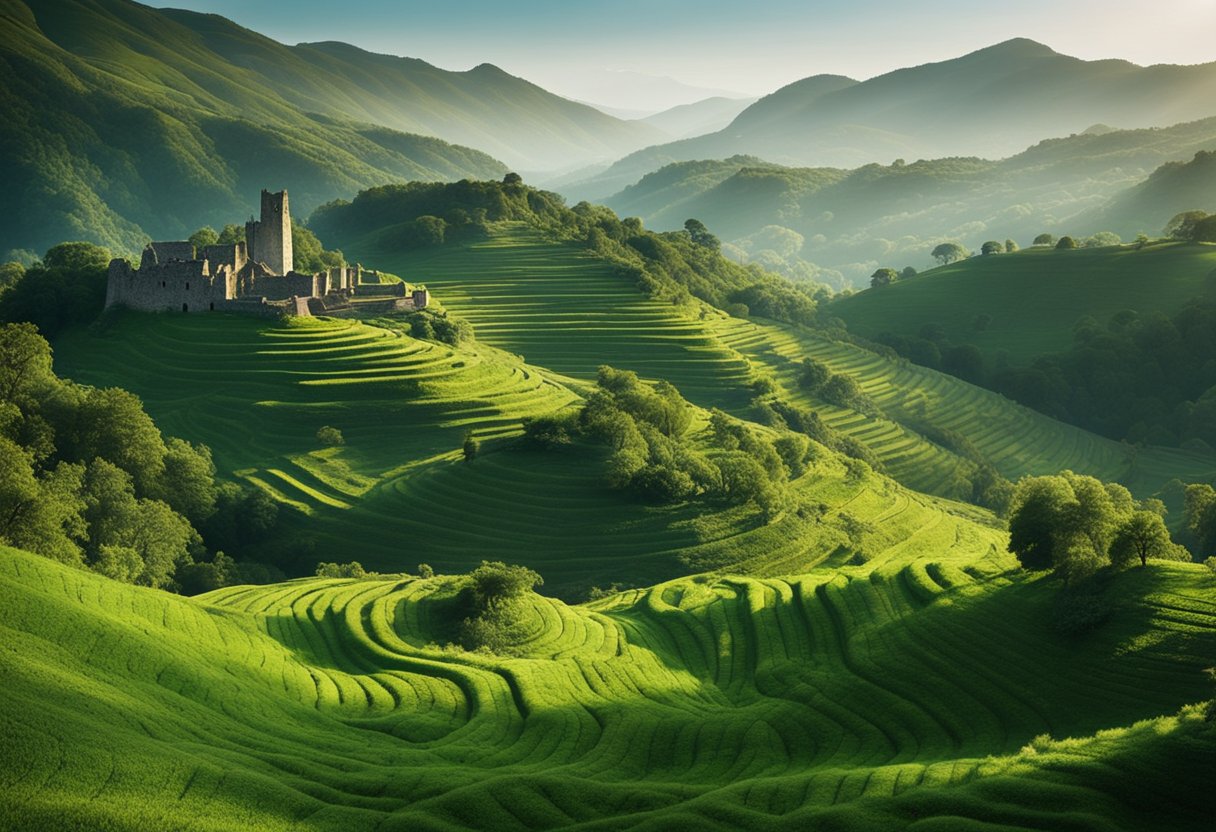
This section addresses some of the most common inquiries regarding Tír na nÓg, illuminating its importance in Irish mythology and the everlasting allure of this enchanted realm of youth.
What is the significance of Tír na nÓg in Irish mythology?
Tír na nÓg is pivotal in Irish mythology as the ultimate utopia, representing a place of idealised beauty and eternal youth. It symbolises escapism from the mortal world’s limitations and is an unbelievable destination within the greater Celtic otherworld, often sought in tales as a reward or paradise.
How does one reach the mythical land of Tír na nÓg?
Mythology suggests that Tír na nÓg can be accessed through supernatural means, such as magical boats, underwater passages, or riding a mystical horse. This journey transcends the physical realm, indicating that Tír na nÓg lies far beyond human reach, typically reserved for heroic figures or those invited by the fae.
Which deities are associated with Tír na nÓg in Celtic beliefs?
While Tír na nÓg isn’t directly ruled by any specific deity, it’s deeply intertwined with the Aos Sí, the spirits or fairies in Celtic mythology. The Aos Sí are considered the de facto inhabitants or guardians of this otherworldly domain.
What role does Tír na nóg play in the narratives of love stories within Celtic mythology?
Tír na nÓg often features as a backdrop for transcendent love stories. These narratives usually involve a mortal becoming enchanted by a fairy lover who invites them into this ageless realm, as seen in the legend of Oisín and Niamh. The land itself symbolises an idyllic state of love, preserved forever young.
What are some of the most notable legends or tales connected to Tír na nÓg?
Among the myriad of tales, the story of Oisín and Niamh is perhaps the most prominent, where Oisín, son of Fionn mac Cumhaill, is taken to Tír na nÓg by the fairy Niamh, experiencing a timeless existence until his fateful return to Ireland.
How is the concept of youth perpetuated in the mythology surrounding Tír na nÓg?
Tír na nÓg’s very essence is the perpetuation of youth. It’s a realm where time does not progress, and its inhabitants remain forever young. This everlasting youth is a metaphor for the vitality and vigour deeply prized in Irish lore, void of illness, decay, or death.


